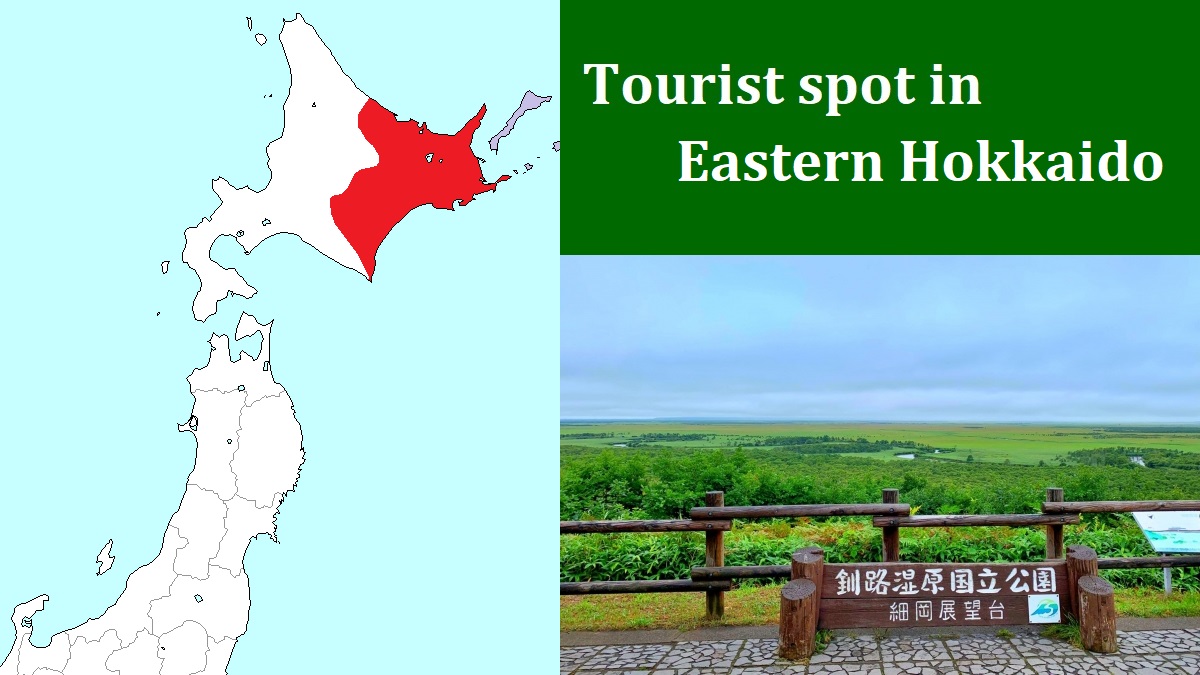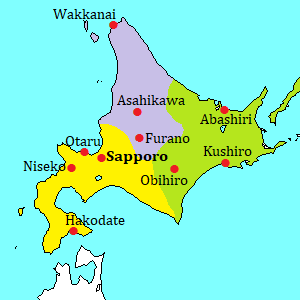Lake Saroma [サロマ湖]
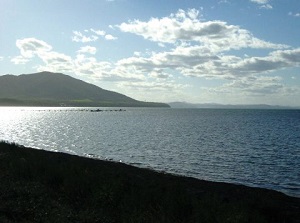
Lake Saroma
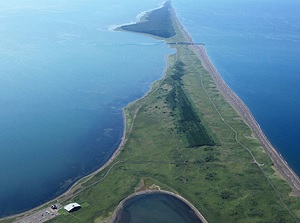
Sand bank of Lake Saroma.
(Left : Lake Saroma, Right : Okhotsk Sea)
Wakka Nature Center is at bottom-left corner
Photo by Tokoro-cho Sightseeing Association
Lake Saroma ("Saroma-ko" in Japanese) is the largest lake in Hokkaido.
It is a saltwater lake, and is about 25 km from east to west and about 8 km from north to south.
The east coast of the lake is located about 27 km west-northwest of Abashiri city and about 13 km west of Lake Notoro.
Originally, this lake was a bay facing Okhotsk Sea.
But, a sand bank had been formed gradually since ancient times and it completed the formation of the lake about 1,000 years ago.
The sand bank is about 25 kilometers long, but the width is only several hundred meters at most.
But there are two gaps on the long sand bank.
They were created for the fishermen around the lake to pass their fishing boats to the sea.
Therefore, the water of the lake is the same as Okhotsk Sea.
Scallops and oysters are cultivated and salmon, shrimps, etc. are also caught.
There is no town around the shore of a lake, and vast landscape spreads out.
The main village is Sakaeura (栄浦) on the east coast.
It is located at the east end of the long sand bank.
There are a few tourist spots around the village.
Wakka Genseikaen
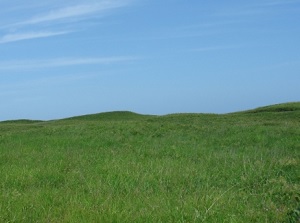
Wakka Genseikaen
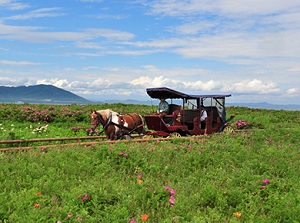
Horse-drawn carriage
Photo by Tokoro-cho Sightseeing Association
Wakka Genseikaen (ワッカ原生花園) is a wide field that over 300 kinds of wild flowers bloom.
It spreads on the sand bank for about 20 km from around Sakaeura village.
There is Wakka Nature Center about 1 km northwest of Sakaeura village, and it is the entrance gate of the field.
For preservation of the nature, the tourists can't visit in the field by car.
Instead, you can use a rental bicycle of the Nature Center.
And horse-drawn carriage is operated for tourist. (about 40 minutes for 2.6 km)
Some walking trails are set up around the Nature Center.
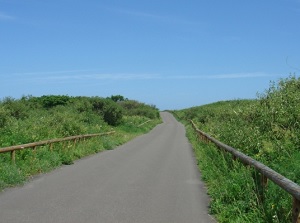
The path in Wakka Genseikaen
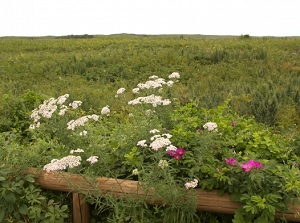
Wild flowers in Wakka Genseikaen
Of course, wild flowers are seen only in late spring, summer and early autumn.
So, the Nature Center opens from the end of April to the middle of October.
A path runs through the field on the sand bank.
You can enjoy the nature that wild flowers bloom on the path.
At the 4-kilometer point, there is a waterway connecting the lake and the sea.
You cross a bridge.
As the last spot, there is a spring "Wakka no Mizu" about 1 km from the bridge.
Though the place is between the sea and the saltwater lake, fresh water is springing out.
Along the route, there is no house and shop.
Cape Kimuaneppu
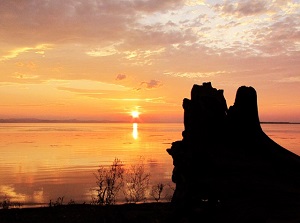
Sunset at Lake Saroma
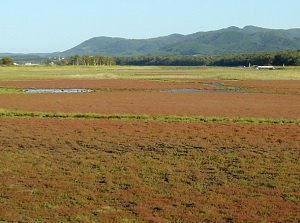
Glasswort around Cape Kimuaneppu
Cape Kimuaneppu (キムアネップ岬, "Kimuaneppu-misaki" in Japanese) is a small cape at the southeast coast of Lake Saroma.
It is located about 6 km southwest of Sakaeura village.
It is a camping site, but is noted for the scenery of sunset.
And there is the glasswort community around the cape.
(Glasswort is a kind of grass growing in salt marshes and the color of the grass becomes red in autumn.
So it is called "sangosou" meaning "coral grass" in Japanese.)
How to get here
By route bus, about 1 hour from Abashiri station to Sakaeura village.
It is operated only in early morning and late afternoon.
To Cape Kimuaneppu, there is no public transportation.
You must use taxi or rental car.

